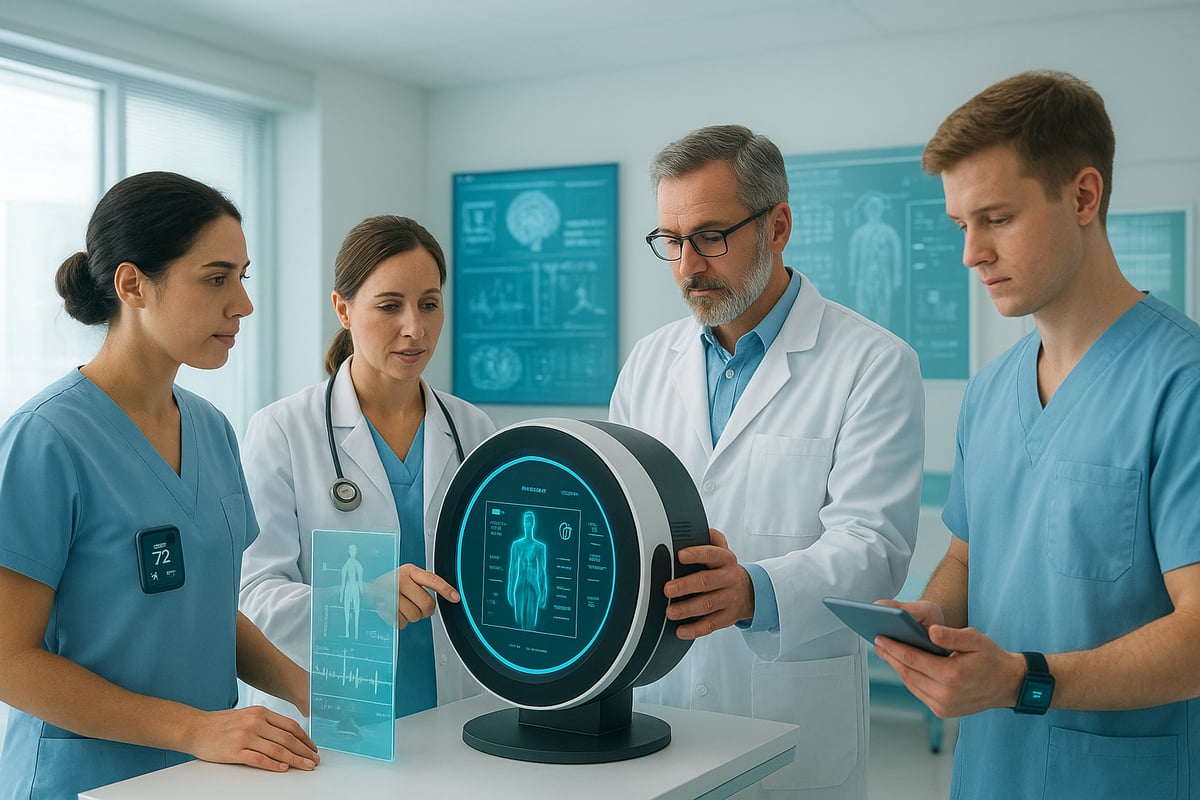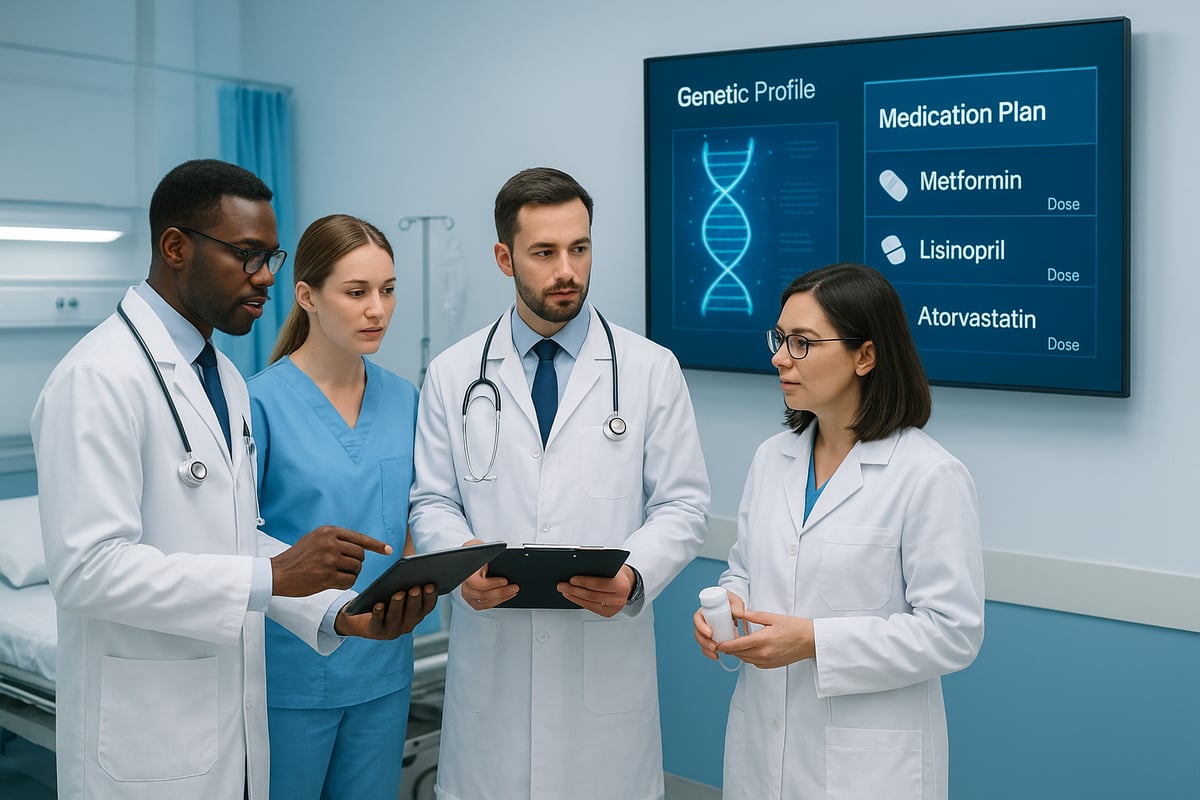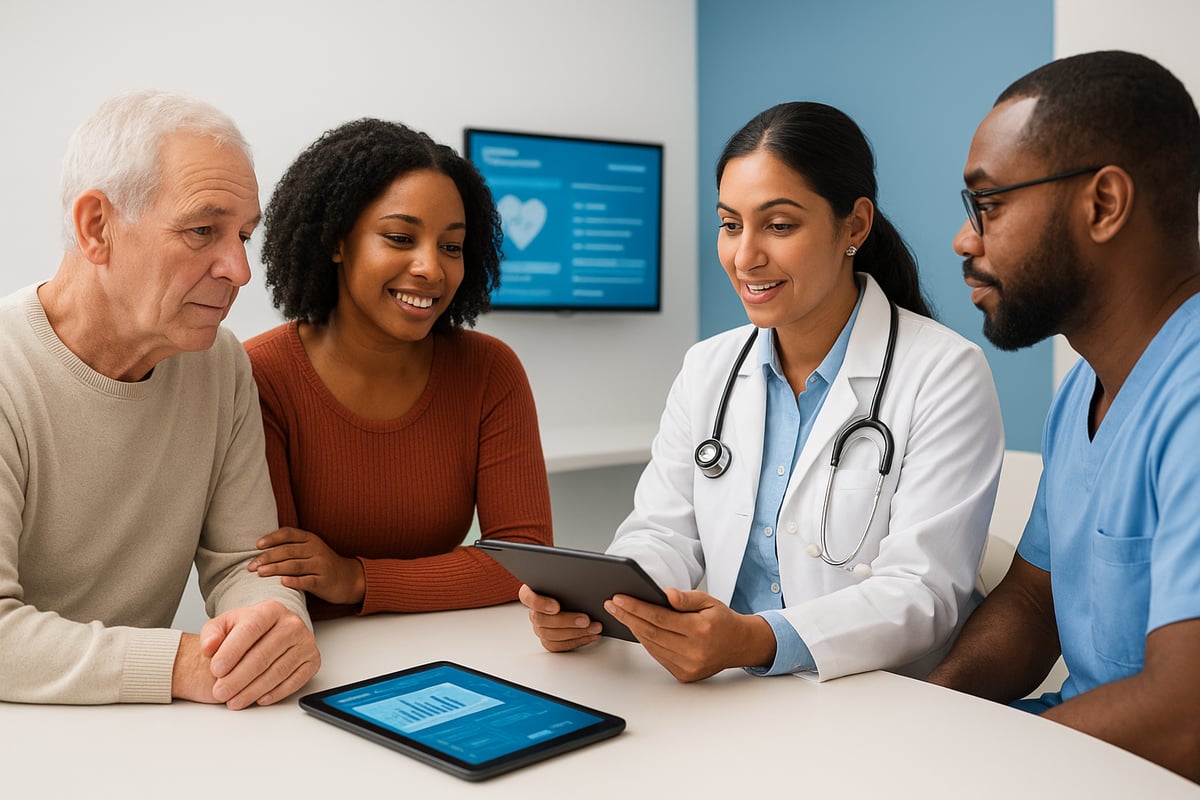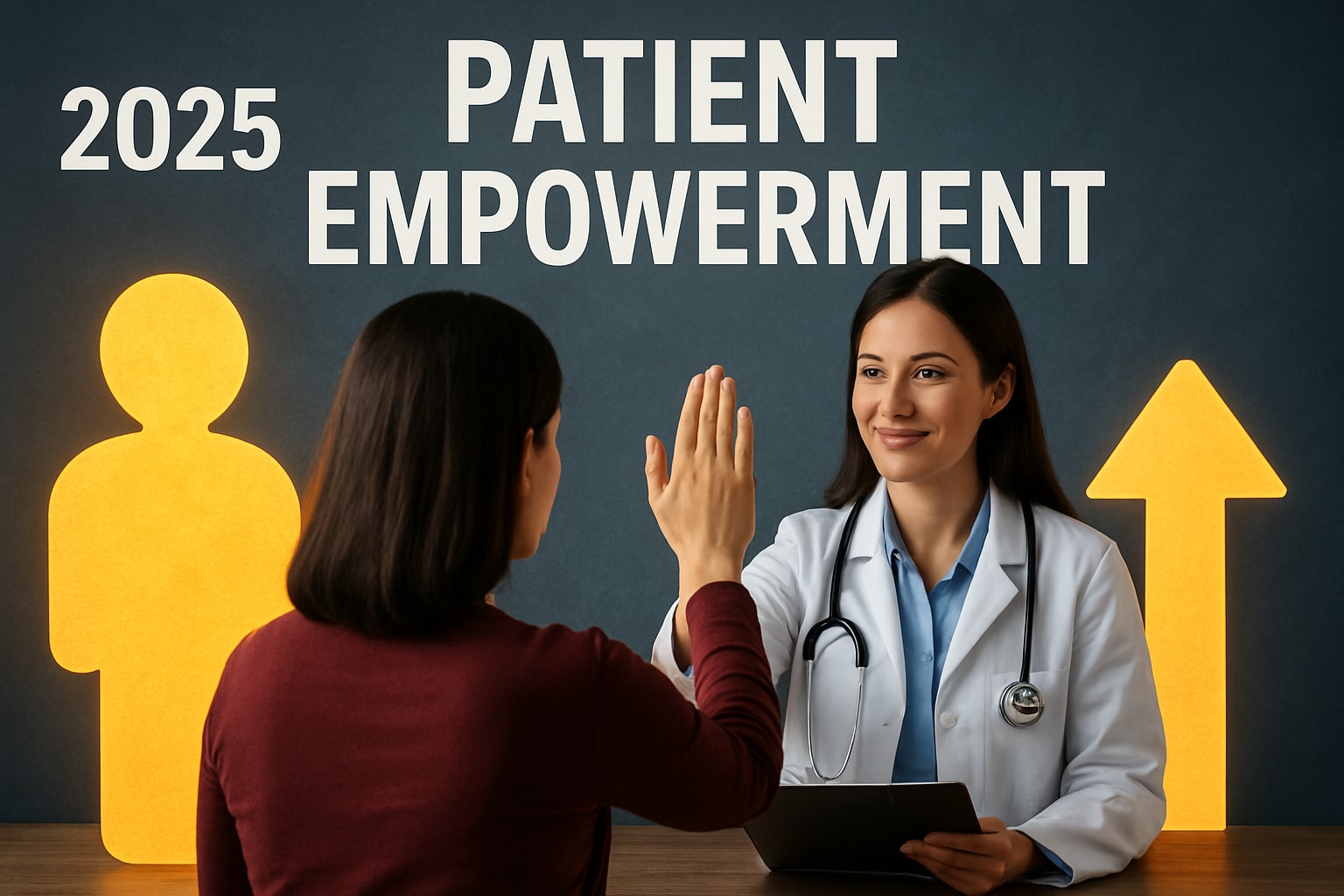The healthcare landscape in 2025 is advancing at a pace never seen before. Breakthroughs in medical science are reshaping how clinicians approach diagnosis and treatment, making care faster and more precise for every patient.
This guide gives you a clear, comprehensive overview of the latest strategies in diagnosis and treatment, combining cutting-edge technology, evidence-based medicine, and a strong focus on patient-centered care.
You will discover step-by-step diagnostic processes, innovative treatment modalities, the impact of digital health, the role of multidisciplinary teams, and the trends that will shape the future of healthcare.
Ready to navigate this new era? Dive in for an up-to-date roadmap to diagnosis and treatment in 2025.
The Evolving Landscape of Diagnosis in 2025
Medical diagnostics have undergone a remarkable transformation since 2020. The rapid pace of innovation is redefining how healthcare professionals approach diagnosis and treatment in every clinical setting. Today, patients and providers benefit from tools that were once considered futuristic, making early detection and precise care more achievable than ever before.

One of the most significant advancements involves the integration of artificial intelligence and machine learning into daily clinical decision-making. AI-driven algorithms now analyze vast datasets from imaging, lab results, and patient histories to support fast, accurate diagnosis and treatment. For example, AI-powered radiology tools can detect subtle abnormalities in scans, reducing human error and speeding up the diagnostic process.
Point-of-care testing has also expanded rapidly. Compact and user-friendly devices allow patients to perform tests at home, with results transmitted directly to healthcare teams. During the COVID-19 pandemic, rapid home tests for infectious diseases became commonplace, setting a new standard for accessibility. This shift supports earlier interventions and reduces the need for in-person visits, which is especially valuable for those managing chronic illnesses.
Genomics and personalized medicine now play a central role in diagnosis and treatment planning. By analyzing individual genetic profiles, clinicians can identify disease risks and tailor diagnostic strategies to each patient. This approach is particularly impactful in oncology, where genetic markers guide targeted therapies and improve prognosis.
Digital health records and interoperability have become foundational to efficient care. Secure, cloud-based platforms enable seamless sharing of patient information among providers, regardless of location. This connectivity supports multidisciplinary collaboration and ensures that the right data informs every step of the diagnosis and treatment pathway.
The following table summarizes key advancements in diagnostic technology:
| Innovation | Impact on Diagnosis and Treatment |
|---|---|
| AI-driven analytics | Faster, more accurate decision-making |
| Home diagnostic devices | Greater accessibility and early detection |
| Genomic profiling | Personalized diagnostic and treatment plans |
| Digital health records | Improved data sharing and collaboration |
According to recent industry reports, over 60% of healthcare providers now utilize AI-assisted diagnostic tools. This widespread adoption reflects the growing trust in technology to enhance accuracy and efficiency. Enhanced diagnostics are not only reducing misdiagnosis rates but also streamlining patient care, allowing clinicians to focus more on patient interaction and less on administrative tasks.
Many of these trends are highlighted in clinical care advancements, which discuss how innovations in diagnostics and treatments are elevating standards across the healthcare sector. With these improvements, diagnosis and treatment are becoming increasingly proactive, empowering both providers and patients to make informed decisions.
As the landscape continues to evolve, the focus remains on making diagnosis and treatment faster, more precise, and more accessible. By leveraging technology and fostering collaboration, healthcare in 2025 is better positioned to deliver improved outcomes for all.
Comprehensive Treatment Approaches in 2025
Advancements in healthcare have redefined how diagnosis and treatment are delivered in 2025. Today’s strategies focus on the individual, drawing from technology, genomics, and collaborative care. Treatment is no longer one-size-fits-all. Instead, it is tailored, multimodal, and designed to improve patient satisfaction and outcomes.
Hospitals and clinics increasingly embrace precision medicine, integrating genetic insights with behavioral and digital interventions. This section explores how these comprehensive approaches are transforming diagnosis and treatment, setting a new standard for care.

Medication Management and Innovations
Medication management has evolved rapidly, offering more precise options for diagnosis and treatment. New drug classes and biologics target specific molecular pathways, allowing clinicians to select therapies that best fit a patient's genetic makeup. AI-assisted tools now play a crucial role in drug selection, checking for interactions, and optimizing dosages.
Digital pill tracking and adherence monitoring are common, enabling real-time feedback for both patients and providers. These innovations help ensure the right medication is taken at the right time, reducing errors and improving safety. For example, digital therapeutics are frequently prescribed for chronic conditions like diabetes and hypertension, supporting traditional medications with interactive guidance.
Patients benefit from personalized dosing, which minimizes side effects and maximizes effectiveness. By integrating technology with traditional pharmacology, the field of diagnosis and treatment has become more precise, responsive, and patient-centered. These advances support both better outcomes and a smoother experience for everyone involved.
Non-Pharmacological and Integrative Therapies
Non-pharmacological therapies have gained prominence as essential components of modern diagnosis and treatment. Cognitive-behavioral therapy (CBT) and teletherapy are widely accessible, breaking down barriers for those seeking mental health support. Virtual reality (VR) is also being used for pain and anxiety management, offering immersive experiences that distract and soothe patients during recovery.
Lifestyle interventions are more effective and engaging, thanks to nutrition, exercise, and sleep tracking apps. These digital tools empower individuals to take an active role in their health. For instance, VR-based rehabilitation programs are now standard for stroke patients, providing interactive exercises that promote faster recovery.
Integrative care models recognize the importance of addressing the whole person, not just physical symptoms. The broad adoption of digital tools in diagnosis and treatment has made these therapies more accessible and effective, supporting holistic patient care.
The Role of Multidisciplinary Care Teams
The success of modern diagnosis and treatment often depends on seamless collaboration among healthcare professionals. Physicians, nurses, pharmacists, therapists, and social workers work together, using digital care coordination platforms to share information and plan care efficiently. This approach ensures that each aspect of a patient's health is addressed without gaps or overlaps.
Family members and caregivers are also involved in care planning, providing valuable insights and support. Team-based management is especially important for chronic diseases like heart failure, where ongoing monitoring and diverse expertise are essential. Hospitals now consider interdisciplinary teams the standard for complex cases.
For a deeper dive into how collaborative teams shape diagnosis and treatment, see Integrated healthcare approaches. This teamwork delivers comprehensive, coordinated care, resulting in better health outcomes and higher satisfaction for patients.
The Impact of Digital Health and Telemedicine
Digital health and telemedicine are reshaping the landscape of diagnosis and treatment in 2025. Their rapid adoption enables patients and providers to interact seamlessly, regardless of distance or time. This shift is not just about convenience, it represents a fundamental transformation in how healthcare is delivered and experienced.

Telemedicine now covers a wide range of services, from routine check-ups to specialist consultations. Patients can access mental health support, chronic disease management, and rehabilitation, all from the comfort of their homes. For example, telepsychiatry has made mental health care more accessible for rural populations, reducing barriers that once seemed insurmountable.
Remote monitoring devices, such as smartwatches, implantable sensors, and mobile health apps, have become integral to diagnosis and treatment. These tools collect real-time health data, allowing clinicians to track symptoms, monitor progress, and adjust care plans promptly. AI-driven chatbots and symptom checkers further streamline triage, guiding patients to the appropriate level of care with remarkable efficiency.
The benefits of digital health extend beyond accessibility. Telemedicine has fostered greater patient engagement, empowering individuals to take an active role in their diagnosis and treatment. According to Telehealth Market Growth Projections, telehealth visits increased by 38 percent from 2023 to 2025, reflecting the growing trust and reliance on these platforms.
Here is a summary of digital health tools and their impact on diagnosis and treatment:
| Digital Health Tool | Primary Use | Impact on Care |
|---|---|---|
| Wearables | Vital sign monitoring | Early detection, continuous data |
| Smart Implants | Chronic disease management | Personalized adjustments |
| Mobile Health Apps | Medication reminders, symptom logs | Improved adherence, engagement |
| AI Chatbots | Triage, symptom checking | Faster access, accurate referrals |
| Telepsychiatry | Mental health support | Expanded access, reduced stigma |
Despite these advances, digital health demands robust digital literacy initiatives. Ensuring patients and providers can effectively use technology is essential for optimizing diagnosis and treatment. As the digital landscape evolves, ongoing education and support will bridge remaining gaps, making high-quality care a reality for all.
Patient-Centered Care and Shared Decision-Making
Patient-centered care is at the heart of effective diagnosis and treatment in 2025. Healthcare providers now recognize that empowering patients leads to better health outcomes and greater satisfaction. In today’s evolving landscape, patients expect more than just clinical expertise—they want to participate actively in their care journey.

Empowering Patients Through Accessible Health Information
Access to clear, understandable information is critical for patient engagement. Digital platforms and education tools now make it easy for individuals to learn about their diagnosis and treatment options. From online portals to interactive guides, patients can review test results, explore therapies, and ask informed questions.
Healthcare teams encourage patients to use these digital resources, which support informed decisions and foster trust. For example, many clinics now provide access to health education resources that explain complex medical terms in plain language. These materials equip patients and caregivers with practical knowledge for managing health at home.
Shared Decision-Making: A Collaborative Approach
Shared decision-making is transforming the way diagnosis and treatment plans are created. Rather than relying solely on physician recommendations, patients and providers work together to choose the best course of action. This approach respects patient values, preferences, and life circumstances.
A variety of tools support shared decision-making, such as:
- Digital decision aids that outline risks and benefits
- Symptom trackers and health diaries
- Virtual consultations for multidisciplinary input
These resources ensure patients understand their diagnosis and treatment, leading to more effective care.
Digital Tools and Personalized Care Plans
Technology now bridges the gap between clinical expertise and patient preferences. Secure online portals allow individuals to review test results, schedule appointments, and communicate with care teams. Personalized care plans are developed collaboratively, reflecting each patient’s goals and needs.
A recent survey found that patient satisfaction scores are 20% higher when shared decision-making is used during diagnosis and treatment discussions. This measurable improvement reflects patients’ desire for involvement and transparency.
| Benefit of Patient-Centered Care | Impact on Diagnosis and Treatment |
|---|---|
| Higher satisfaction scores | More engagement and adherence |
| Fewer errors | Better communication |
| Improved health outcomes | Timely interventions |
Measurable Outcomes and Lasting Impact
When patients are informed and involved, they are more likely to comply with recommended diagnosis and treatment plans. Providers also benefit, as engaged patients report fewer misunderstandings and higher trust in their medical team.
Healthcare organizations are adopting strategies for improving patient care outcomes by integrating patient-centered care principles throughout the diagnosis and treatment process. Communication, education, and collaboration are now recognized as essential components of modern healthcare.
In summary, patient-centered care and shared decision-making are reshaping the experience of diagnosis and treatment in 2025. As digital tools and education resources become standard, patients and providers can work together more effectively than ever before.
Future Trends and Innovations in Diagnosis and Treatment
The coming years promise remarkable advances in how healthcare professionals approach diagnosis and treatment. As scientific understanding deepens and technology matures, patients and clinicians alike benefit from precise, efficient, and personalized care. This future is being shaped by the convergence of genomics, artificial intelligence, robotics, and immunotherapies, each playing a pivotal role in transforming medical practice.
The Rise of Genomics and Biomarker-Driven Care
One of the most significant shifts in diagnosis and treatment is the integration of genomics and proteomics. Today, clinicians can analyze a patient's genetic profile to predict disease risk, detect illnesses earlier, and tailor therapies to individual needs. Biomarker-driven care enables the identification of subtle molecular changes, allowing for targeted interventions before symptoms even appear.
For example, cancer therapies are now frequently selected based on genetic mutations, increasing treatment effectiveness and reducing unnecessary side effects. In 2025, 50% of new FDA-approved therapies are personalized, reflecting the rapid move toward individualized medicine. These advances make diagnosis and treatment more precise and responsive than ever before.
AI, Robotics, and Predictive Analytics Transform Care
Artificial intelligence and robotics are redefining the landscape of diagnosis and treatment. AI algorithms sift through massive datasets to flag early warning signs, recommend diagnostic pathways, and support clinical decision-making. Robotic surgical systems offer unmatched precision, minimizing invasiveness and speeding recovery for complex procedures.
Predictive analytics harness historical and real-time data to forecast patient risks and guide preventive strategies. These technologies work together to create a seamless, data-driven approach to care. As detailed in the Telemedicine Technology Market Analysis, emerging AI and IoT-powered solutions are fueling a new era in diagnosis and treatment, enabling earlier interventions and more effective therapies.
Personalized Vaccines and Immunotherapies
The field of immunotherapy is rapidly evolving, with personalized vaccines becoming a cornerstone of modern diagnosis and treatment strategies. By leveraging a patient's unique genetic and molecular profile, clinicians can design vaccines that train the immune system to target specific pathogens or cancer cells. This tailored approach leads to higher efficacy and fewer adverse effects.
Immunotherapies are also expanding beyond oncology, offering hope for chronic conditions and infectious diseases. These innovations are paving the way for a future where diagnosis and treatment are not only customized but also preventative, aiming to stop disease before it takes hold.
Preparing for Tomorrow: Continuous Innovation
As technological advancements accelerate, continuous learning and adaptation become essential for healthcare providers and patients. Interdisciplinary collaboration, ongoing education, and the integration of new tools into clinical practice ensure that the benefits of innovation are fully realized.
Future trends in diagnosis and treatment will continue to focus on individualization, optimization, and proactive care. The path forward demands agility and a commitment to lifelong learning, ensuring that each breakthrough translates into better outcomes for all.






